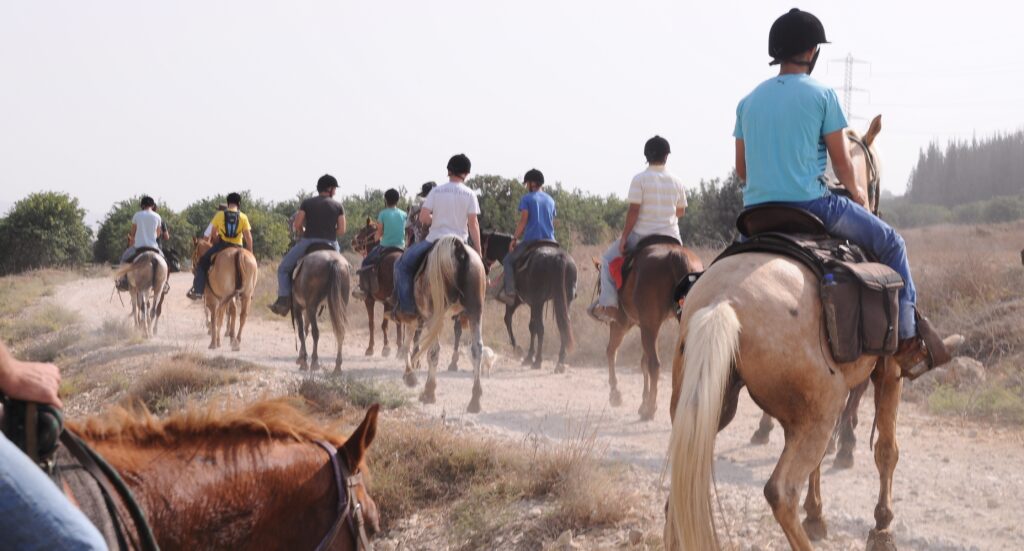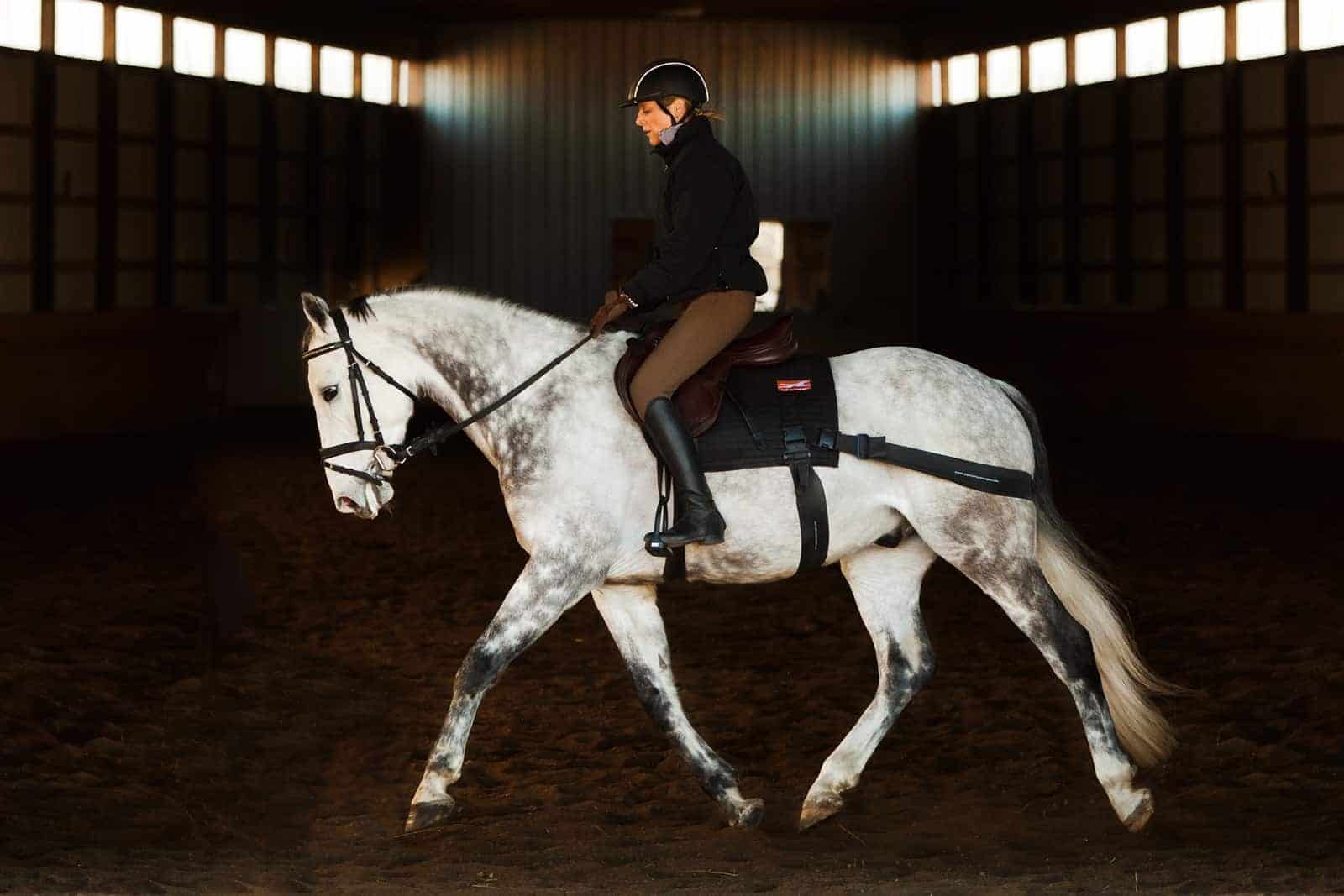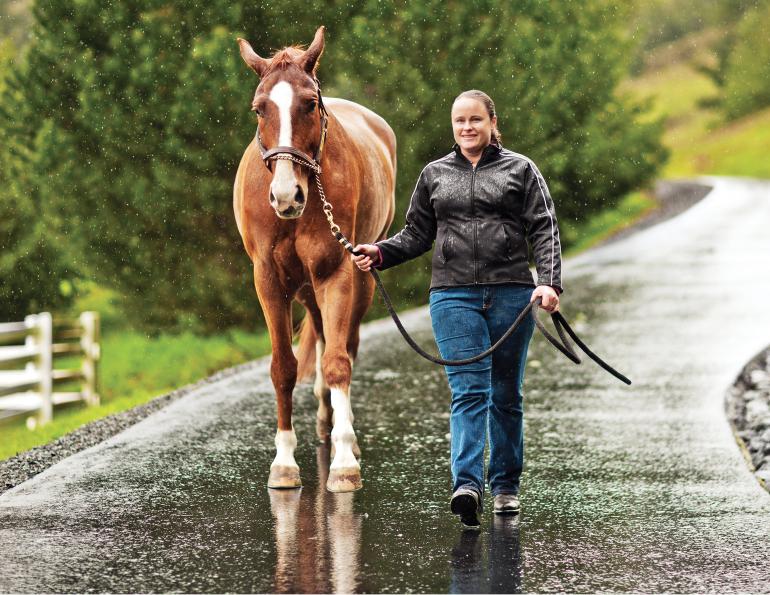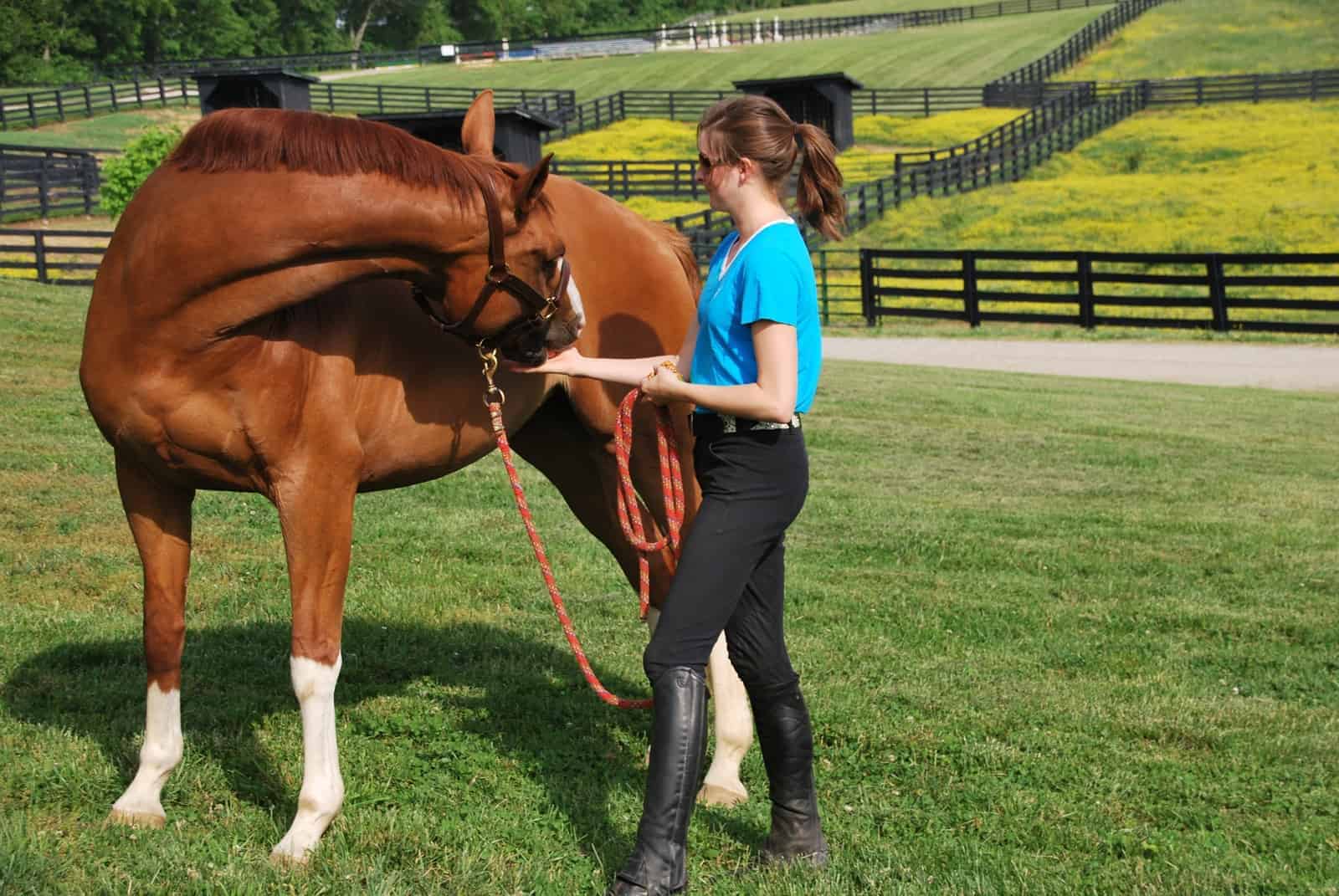Do you ever wonder if horseback riding is more than just a fun activity? Well, it turns out that it has a connection to rehabilitation! In this article, we’re going to delve into the world of horseback riding and explore how it can be used as a form of therapy. You’ll learn about the benefits, techniques, and success stories that make this unconventional approach so effective. So, buckle up (or should I say, saddle up?) and get ready to discover the surprising connection between horseback riding and rehabilitation!
When it comes to rehabilitation, we often think of traditional methods like physical therapy or occupational therapy. But did you know that horseback riding can also be an effective tool? Known as therapeutic riding or hippotherapy, this type of therapy uses horses to help individuals with various physical, emotional, and cognitive challenges. How exactly does it work? Well, riding a horse provides a unique combination of physical, psychological, and sensory inputs that can have a profound impact on the rider’s overall well-being. This therapeutic approach has been proven to enhance balance, coordination, muscle strength, and even social interaction. So, if you’re curious to learn more about how horseback riding can be used as a form of rehabilitation, keep reading the rest of the article. You won’t want to miss it!
Horseback Riding and its Connection to Rehabilitation
Horseback riding is not only a recreational activity but also a powerful tool for rehabilitation. The physical, psychological, and social benefits it offers make it an effective therapy for individuals with disabilities or those recovering from injuries. In this article, we will explore the various ways in which horseback riding can enhance physical fitness, aid in rehabilitation, and improve overall well-being.

Improving Physical Fitness through Horseback Riding
Strength and Endurance
Horseback riding engages multiple muscle groups, especially in the core, legs, and upper body. The constant movement and control required to ride a horse help strengthen these muscles, enhancing overall strength and endurance. Regular horseback riding sessions can gradually improve stamina and increase muscle tone.
Balance and Coordination
Maintaining balance while on a horse challenges the rider’s coordination skills. The rhythmic movements of the horse require the rider to dynamically adjust their body position, improving proprioception and balance control. As a result, horseback riding can help individuals improve their coordination and stability, both on and off the horse.
Flexibility and Range of Motion
The motion of a horse’s gait stimulates the rider’s body to move in sync, providing subtle stretches to muscles and joints. This promotes flexibility and increased range of motion. Individuals with limited mobility can benefit greatly from horseback riding, as it encourages the loosening of tight muscles and helps prevent the stiffness associated with immobility.
Horseback Riding for Rehabilitation
Equine-Assisted Therapy
Equine-assisted therapy (EAT) is a therapeutic approach that incorporates horses into a rehabilitation program. It is often used in conjunction with other therapeutic interventions to address physical, emotional, and cognitive needs. EAT sessions are guided by trained professionals who are skilled in using the unique qualities of horses to help individuals achieve their rehabilitation goals.
Therapeutic Horseback Riding
Therapeutic horseback riding focuses on utilizing horseback riding specifically as a rehabilitation tool. It involves carefully planned riding sessions, tailored to meet the specific needs of individuals with disabilities or those in need of rehabilitation. These sessions aim to improve physical functioning, develop cognitive and sensory skills, and boost emotional well-being.
Benefits for Individuals with Disabilities
Horseback riding has shown immense benefits for individuals with disabilities. It offers a unique opportunity for them to engage in physical activity, build strength and endurance, and improve their overall quality of life. Some specific benefits include:
-
Improved Balance and Posture: Horseback riding helps individuals develop better postural control and align their body properly while on the horse.
-
Enhanced Motor Skills: The rhythmic movements of the horse promote the development of fine and gross motor skills, leading to improved coordination and control.
-
Increased Self-Confidence: Successfully riding a horse and achieving goals in therapy sessions can significantly boost self-esteem and self-confidence in individuals with disabilities.

Psychological Benefits of Horseback Riding
Reduced Stress and Anxiety
Interacting and connecting with horses has been shown to have a calming effect, reducing stress levels and anxiety. The rhythmic motion of the horse, along with the tranquil surroundings of the riding environment, can provide a therapeutic escape from the pressures of daily life.
Improved Mood and Emotional Well-being
Horseback riding releases endorphins, the body’s natural mood boosters. The sense of accomplishment and joy that comes from conquering the challenges of riding can enhance emotional well-being and improve overall mood. It can also serve as a healthy outlet for emotional expression and stress management.
Boosted Self-Esteem
Mastering the skills required for horseback riding can greatly enhance self-esteem. Overcoming challenges and building a partnership with a horse can instill a sense of accomplishment and self-worth in riders. This newfound confidence can positively impact various aspects of life beyond the riding arena.
Social Benefits of Horseback Riding
Building Relationships and Trust
Horseback riding often involves working closely with horses and other riders, fostering the development of strong bonds and relationships. The partnership between horse and rider relies on trust, effective communication, and mutual respect. These skills can translate into improved social interactions and relationships outside of the horseback riding context.
Enhancing Communication Skills
Interacting with horses requires clear communication and non-verbal cues. Riders learn to communicate their intentions effectively, helping them develop stronger communication skills both on and off the horse. This improved ability to communicate can positively impact personal relationships and professional settings.
Sense of Belonging
Engaging in horseback riding activities can create a sense of belonging within a community of riders and horse enthusiasts. Participating in events, competitions, or group riding sessions provides opportunities for social interaction, support, and a shared passion for horses. This sense of belonging can contribute to improved mental well-being and a support network for individuals.
Equine-Assisted Therapies in Rehabilitation
Physical Rehabilitation
Horseback riding plays a vital role in physical rehabilitation programs. The unique movements of the horse can help individuals regain strength, balance, and function after an injury or surgery. It stimulates the muscles and joints, providing a dynamic environment for physical rehabilitation exercises.
Occupational Therapy
Occupational therapy often incorporates equine-assisted activities to promote independence and functional abilities. These activities focus on improving individuals’ ability to perform everyday tasks and engage in meaningful activities. Horseback riding can be used as a means to enhance fine motor skills, hand-eye coordination, and overall participation in activities of daily living.
Speech and Language Therapy
Equine-assisted activities can also be implemented in speech and language therapy. The presence of the horse and the engaging riding sessions create a motivating and interactive environment for individuals working on speech and language goals. It can promote verbal communication, rhythm, and articulation skills.
Therapeutic Horseback Riding as a Rehabilitation Tool
Individualized Treatment Plans
Therapeutic horseback riding programs are designed to meet the specific needs of each individual. Trained professionals assess the rider’s abilities and goals and develop a personalized treatment plan. This tailored approach ensures that the therapy sessions address the unique challenges and abilities of each rider.
Adaptive Equipment and Techniques
Adaptive equipment, such as modified saddles or reins, can help individuals with physical disabilities or limitations engage in horseback riding. Trained instructors and therapists utilize various techniques and modifications to accommodate the rider’s needs, ensuring a safe and effective rehabilitation experience.
Goal-oriented Approaches
Therapeutic horseback riding focuses on setting achievable goals that promote growth and progress. These goals may include improvements in strength, balance, coordination, or specific functional skills. Regular evaluation and tracking of progress help motivate individuals and provide a sense of accomplishment.

Promoting Independence and Functional Abilities through Horseback Riding
Activities of Daily Living
Horseback riding can have a significant impact on individuals’ ability to perform activities of daily living (ADLs). The physical and cognitive skills developed through riding can translate into improved independence in tasks such as grooming, dressing, and feeding oneself.
Mobility and Motor Skills
The motion of riding a horse mimics a walking pattern, stimulating the muscles and joints involved in mobility. Individuals with mobility impairments can benefit from the rhythmic motion of the horse, which can enhance their overall mobility and coordination.
Cognitive and Psychological Functioning
Engaging in horseback riding activities requires cognitive processing, spatial awareness, and problem-solving skills. Regular riding sessions can improve focus, attention, memory, and cognitive flexibility. Additionally, the emotional benefits of riding can positively impact overall psychological functioning.
Considerations for Safety and Accessibility during Horseback Riding Rehabilitation
Proper Supervision and Training
Safety should always be a priority during horseback riding rehabilitation. Trained instructors and therapists should provide proper supervision and guidance to ensure the well-being of the riders. They should also have a solid understanding of the specific needs and limitations of each individual.
Accessible Facilities and Equipment
To make horseback riding accessible to individuals with disabilities, it is essential to have facilities and equipment that cater to their specific needs. This may include ramped mounting blocks, wheelchair-accessible paths, and specialized equipment to ensure safe and comfortable riding experiences.
Medical Clearances and Precautions
Before engaging in horseback riding rehabilitation, individuals should undergo medical clearances and assessments. These evaluations help determine if riding is suitable and safe for them. Certain precautions may need to be taken, such as considering any musculoskeletal or neurological limitations and ensuring the rider is wearing appropriate safety gear.

Evaluating the Effectiveness of Horseback Riding in Rehabilitation
Outcome Measures and Data Collection
To evaluate the effectiveness of horseback riding rehabilitation, outcome measures and data collection should be implemented. These assess the progress and changes in the riders’ physical, cognitive, and psychological functioning. Collecting and analyzing data can provide valuable insights and support evidence-based practices.
Long-term Benefits and Sustainability
Research on the long-term benefits of horseback riding in rehabilitation is crucial. It helps understand the lasting effects of riding on individuals’ well-being, functional abilities, and overall quality of life. Long-term studies can also contribute to the development of sustainable rehabilitation programs and enable continuous improvements in therapy approaches.
Research and Evidence-based Practices
Continued research in the field of equine-assisted therapy and therapeutic horseback riding is vital for improving rehabilitation practices. Studying the effects, best practices, and potential limitations of these interventions can guide therapists and instructors in providing effective and evidence-based therapies.
Future Directions in Horseback Riding and Rehabilitation
Innovation in Equine-Assisted Therapies
As technology advances, innovation in equine-assisted therapies can shape the future of rehabilitation. Incorporating virtual reality, interactive sensors, and other digital advancements can enhance the therapeutic experience and provide additional support to riders.
Integration with Other Rehabilitation Approaches
Collaboration between different rehabilitation approaches can lead to more comprehensive and integrated care for individuals. Combining horseback riding with traditional therapies, such as physical therapy, occupational therapy, or speech and language therapy, can optimize rehabilitation outcomes.
Expanding Access and Education
Ensuring that horseback riding rehabilitation is accessible to a wider population is essential. Expanding access to equine-assisted therapies and educating individuals about the benefits and availability of these programs can make them more widely recognized and utilized.
Conclusion
Horseback riding offers a unique and powerful connection to rehabilitation. Through its physical, psychological, and social benefits, it has proven to be an effective therapy for individuals with disabilities and those in need of rehabilitation. Whether as part of a formal rehabilitation program or as a recreational activity, horseback riding has the potential to transform lives and improve overall well-being. So saddle up and discover the remarkable benefits of horseback riding today!
(Word Count: 2099)
